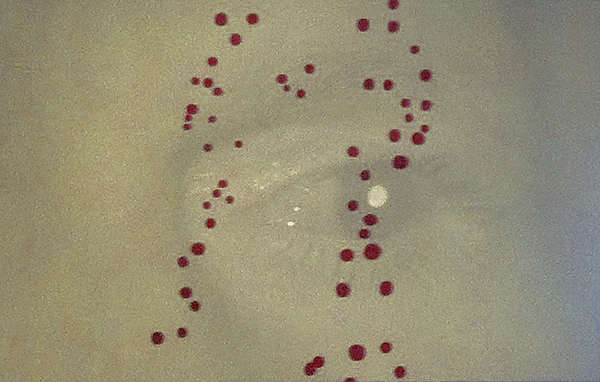The seed of this project is the rhetoric question of the painter Conti raises in Gotthold Ephraim Lessings’s masterpiece Emilia Galotti:
Ha! Why is it impossible to paint with our eyes! There is so much that gets lost on the long way from our eyes along the arm to the paintbrush! [...] Don‘t you think, Your Majesty, Raphael would still have been a genius of a painter if he would have been born without hands?

The brain will become the artist’s atelier in our third millennium, and Pingo ergo sum implants such ateliers into Rostock‘s Hall of Art and starts to expand into the public space.
Taking increasingly virtualised, complex levels of activities and the immaterial digital world stage into account, the project will bring the question of a mental and, thus, neuronal dimension of artistic and artificial creative procedures into the focus of public awareness.
Brain Painting is made possible by so-called brain computer interfaces (BCIs), which were originally developed to help physically handicapped people, i. e. giving them back some control over their environment. For example, the ALS and Locked-In patient Ms. Janssen performs Brain Painting during the exhibition and uses communication with the eyes in order to interact with other people.
Adi Hoesle adapted BCIs for artists. Beyond being the vehicle to address fundamental questions about the nature of art and reality, Brain Painting is now also a new way of allowing patients to express themselves.
In Brain Painting the cerebrally painted picture draws itself via the power of thoughts and, simultaneously, on the walls of Rostock‘s Hall of Art, the Ars Electronica Centre, and live into the web. Various renowned artists will perform Brain Painting in their own atelier, and via live streaming the emerging paintings will show up in the exhibition:
During the exhibition, the main exhibition hall will also be the place, where an ALS patient is present who paints via eye movements and brain signals. In addition, visitors and artists can exercise Brain Painting and painting with the eyes when sitting within a glass cube. This way, both the patient and the visitor become part of the exhibition.
In addition, visitors can enter a so-called Room of Silence, where they are totally isolated form the environment, i. e. they will only experience the stimuli they generate themselves. This room will also be used for experiments in the Art Research Lab.
A collaboration with the Department of Differential Psychology of the University of Würzburg (Prof. Dr. Andrea Kübler) is expanded to a collaboration with the Institute of Informatics and Electrical Engineering of the University of Rostock (Prof. Dr. Lars Schwabe) in order to generalize the ideas embodied in Brain Painting, and to explore new ideas in the Art Research Lab. During the time of the exhibition, this lab will be physically located next to the main exhibition hall in a large atrium (see illustration). Visitors can directly interact with the scientists, discuss their ongoing work, and become experimental subjects.
The whole project will be documented in a film and with effective publicity. An extensive publication is envisaged






